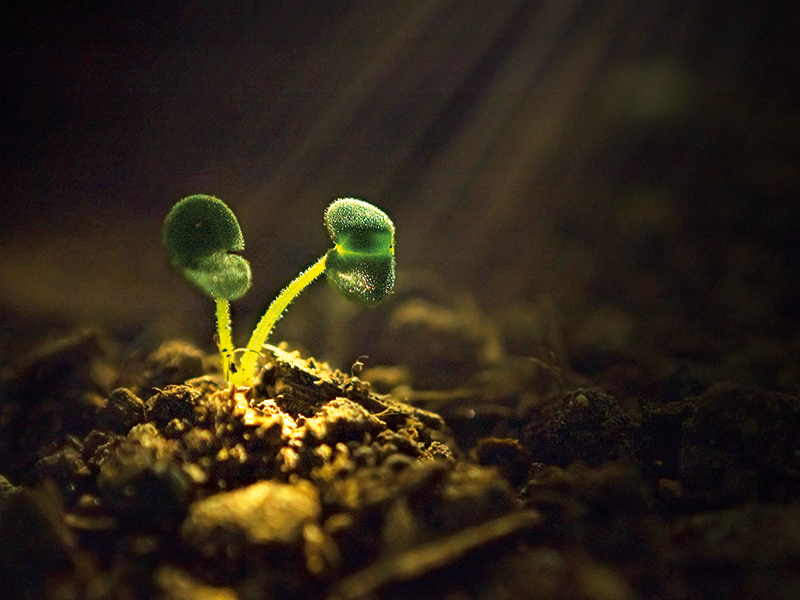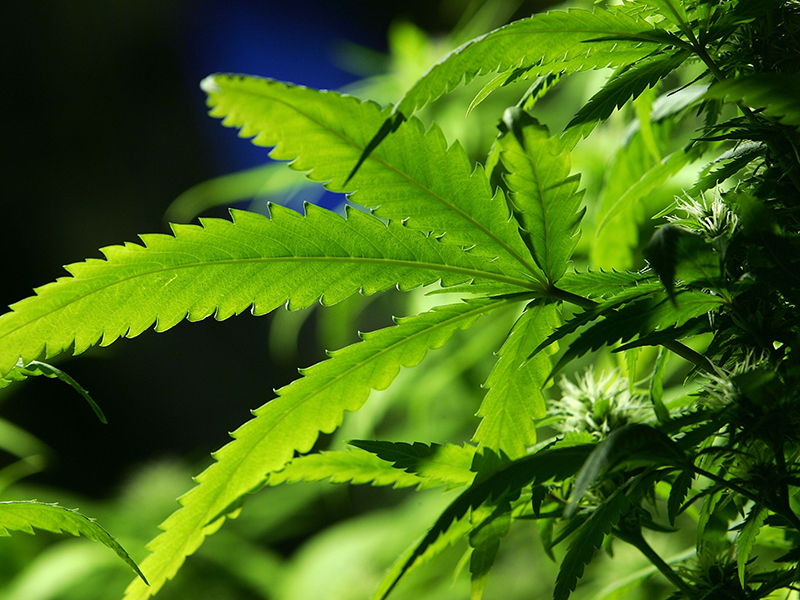Growcentia: microbial biostimulants can revolutionise agriculture
With an array of microbes already present in our soil, enhancing the role they play in agriculture could revolutionise sustainable plant growth, writes Colin Bell, Co-Founder and Chief Growth Officer at Growcentia

Up to 70 percent of the nutrients present in soil are made unavailable almost immediately due to natural chemical binding
The agricultural sector has already undergone three distinct technological revolutions. The first, which took place over several continents and a huge timeframe, saw humans move from a hunter-gatherer lifestyle to one based on domesticated crops. The second revolution focused on the UK, with crop mechanisation spurring an unprecedented rise in agricultural output. The third, also known as the Green Revolution, was a more global affair, which leveraged the use of pesticides and genetic modification to ensure food production matched population growth. Now, it appears, the fourth agricultural revolution is upon us.
In the not-too-distant future, microbes will be the primary way we support clean plant growth. Whether we use bacterial or fungal species, microbes offer a host of benefits, including improved metabolism, enhanced nutrient uptake and heightened protection from destructive pathogens. In place of chemical pollutants and GM testing, biological improvements promise to stimulate plant growth without generating harmful side effects in the short or long term. In fact, microbes are already being implemented to create their own agricultural revolution, one that has sustainability at its very core.
Microbial revolution
As we continue to be inspired by the developments of years gone by, it’s worth noting biological products are not new to the agricultural industry. The symbiotic relationship between plants and bacteria has been known for some time, but only now is science enabling us to harness this connection.
Having functionally targeted bacteria and fungi present in soil can greatly enhance the bioavailability of nutrients; phosphorous, for example, is often present in relatively high levels, but remains unavailable to plants due to chemical bonding and transformations. Bacteria can secrete organic acid compounds, however, allowing phosphorous and other vital nutrients like iron to be readily available for uptake.
With Malthusian population concerns never too far away, the adoption of microbial biostimulants could provide a timely boost to food output, doubling our current levels of production by 2050
Aside from nutrient cycling, microbes can boost disease resistance by forming a biological shield against pathogenic bacteria, fungi and viruses. Further, soil bacteria have been found to inhibit the growth of parasites and other harmful proteins by producing compounds including lipopolysaccharides, salicylic acid and siderophores. Instead of introducing toxic chemicals into the agricultural environment, plants are protected by enhanced biological defences that are already naturally present.
Our understanding of plant-microbe interactions has also improved considerably in the last 10 years. Higher resolution molecular tools now allow us to gain more detailed insights from within the microbial community structure, enabling us to learn how the dynamics between plants and microbes affect plant growth throughout the year.
As we become increasingly aware of the damage caused by the excessive use of petrochemical fertilisers and pesticides, the transition towards more sustainable methods of food production will gather pace. Previously, soil fertilisation has focused on the use of chemical compounds, most of which are petroleum-based and all of which are synthetic. By contrast, biological additives are entirely natural and support plant growth by working with all known agricultural management practices.
Instead of simply introducing more plant nutrients into a soil system, microbial biostimulants aim to maximise the nutrients that are already in place. With Malthusian population concerns never too far away, this particular agricultural innovation could provide a timely boost to food output, doubling our current levels of production by 2050.
Theory to practice
Although farmers are generally receptive to any development that can improve security and boost crop yields, scaling biological products for agriculture management can be extremely challenging. The testing of microbial biostimulant products, for example, can take as long as seven years, with stringent research, development and testing protocols in place to ensure solutions are ready for market. One of the principle issues is that researchers and scientists are not solely tasked with making sure a product is effective. The product also needs to be suitable for a specific crop, compatible with existing management practices, scalable over a wide area, and have the expected shelf life.
This means introducing new microbes to the agricultural sector could cause disruption before it leads to opportunity. Shifting from synthetic chemical inputs to naturally occurring biological solutions risks undermining the existing trend towards higher yields and more reliable output levels. However, agricultural producers must remember microbes are naturally present in all soil conditions; the cultivation of a healthy microbiome must, therefore, begin by looking at pre-existing natural features.
Every individual microbe has its own specialised role, whether it be breaking down plant material or staving off pathogens. But, collectively, microbes are more analogous to a complex production line. When farmers begin to realise the many benefits of using natural soil microbes to boost productivity, alternative methods will fall by the wayside. Microbial solutions are more sustainable because they enhance crop health, development and yield year after year, while also improving the condition of the soil, which is one of the biggest problems facing farmers in the 21st century.
Biological benefits
In some respects, the development of agriculture appears to be never ending. Ever since mankind first learned to grow seeds, people have worried that population growth would eventually outstrip food supply. Since then, however, a multitude of technological innovations have come along to enable humanity to grow once again, whether it is improved irrigation or vertical farming. However, this can only continue as long as the agricultural industry values sustainability as one of its primary aims. The present use of pesticides and fertilisers, therefore, offers a genuine cause for concern.
Nutrient use efficiency has become a problem for many farmers, rendering the use of petrochemical synthetic fertilisers unsustainable. For example, even as the levels of phosphorous fertilisers (an important macronutrient for plant growth) accumulate within the soil, up to 70 percent is made unavailable almost immediately due to natural chemical binding and transformations.

As a result, phosphorous can build up in soils for decades without being available to plants. This is a huge environmental concern: as soils saturate with these nutrients, flushing events occur, polluting waterways and, in many cases, causing devastating algal blooms, like those associated with the major bodies of water found along the East Coast of the US. Microbes, like in nature, can naturally cycle nutrients to support plant growth and alleviate the toxic build-up of chemical fertilisers in soils.
Improving the efficiency of macro and micronutrient usage is one of the principal aims of microbe use, as is the repulsion of pathogens and pests, and the use of different biological endophyte technologies to support plants during environmental stress. Aside from these general advantages, however, there are also more bespoke benefits on offer.
The emerging legal cannabis sector, for example, is one of the primary market cases for microbe use. Intense regulation in this fledgling industry makes the use of chemicals particularly difficult, leaving spider mites, russet mites and powdery mildew to ravage existing crops. Effective biological technologies will be critical to support the success of the cannabis industry moving forward.
The broader movement towards natural and organic agricultural management is increasing across all industry segments, and the use of biological products will be critical in supporting organic growers to meet demand. Regulatory hurdles will present challenges to the implementation of microbial crop management, but no technological innovation has been without its missteps. Like the seed drill, tractor and combine harvester before them, microbes are here to stay, and look set to play a prominent role in the future of farming.













